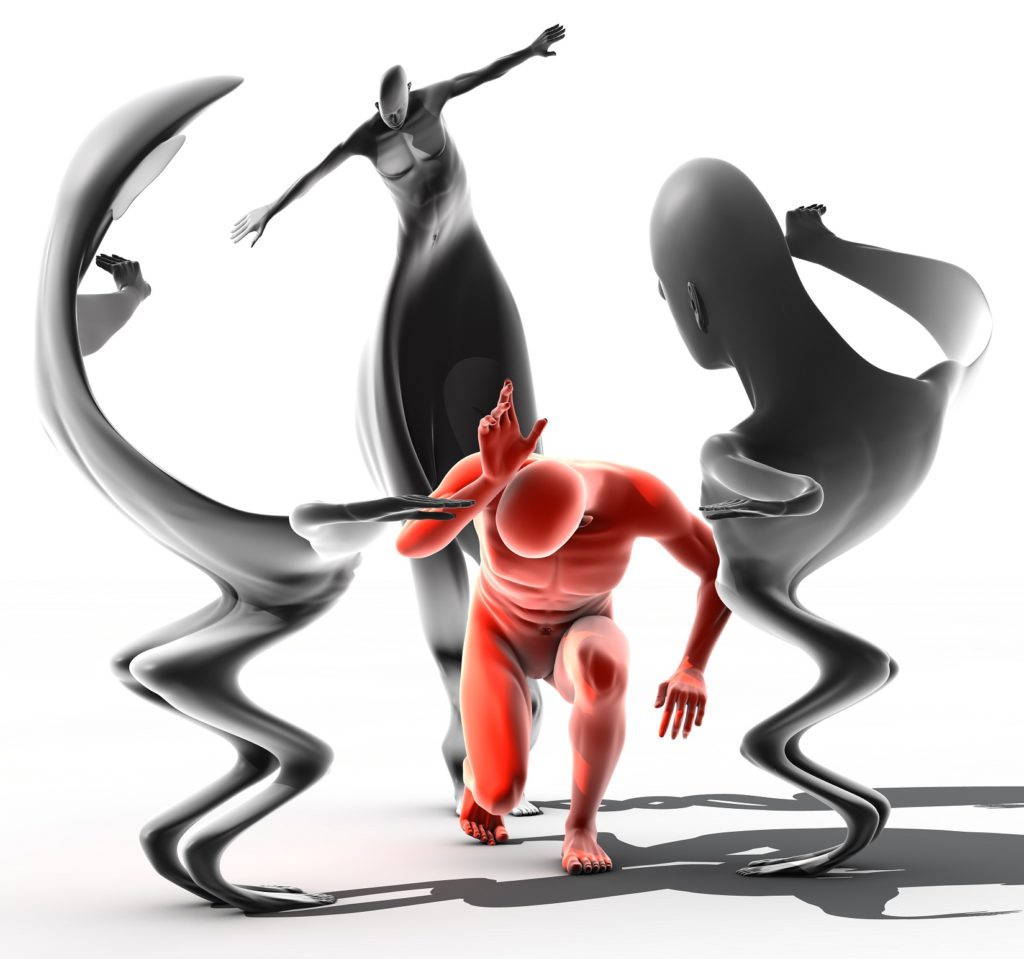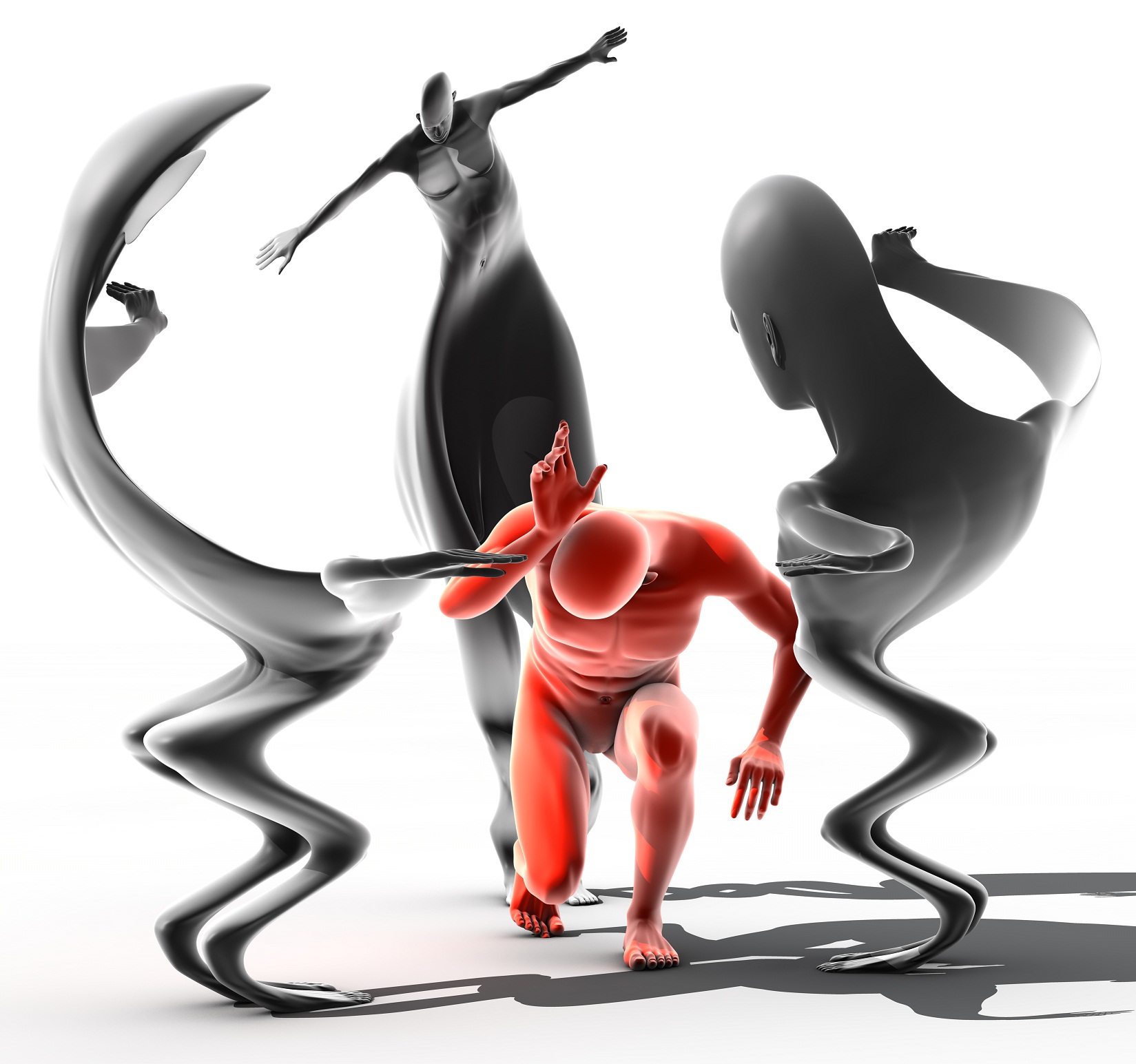
Thus far we have discussed the idea that the rich, multifaceted and complex stream of mental life indigenous to the human condition known as the mind or human consciousness is an embodiment of the brain and specifically of the cerebral cortex. According to this equation, the mind is an emergent and higher functional system of the brain manifesting novelty and an unprecedented degree of cosmic freedom unknown to other organisms that transcends the contracted and lower forms of causation spawned by electrochemical activity at the neural level. What this means in layman’s terms is that the mind encompasses an objective and very real existence in the phenomenal world, but only as long as the physical brain remains intact. Mind equals brain; when the latter suffers destruction or corruption the former ceased to exist. Science has made itself patently clear on such matters.
Coming from an opposing viewpoint is an expansive and sweeping collection of metaphysically-flavoured literature asserting that the mind or human consciousness can and does survive the corruption of the physical body. Ever since the emergence of institutionalized mediumship in nineteenth century western Spiritism and North American shamanism, much of the black ink transliterated onto the bound pages of popular metaphysical, philosophical, and theosophical books has concerned itself with sketchy parameters that define what observable and quantifiable phenomena constitute as “evidence” for the survival and disengagement of consciousness from the cerebral cortex. Any rational, sane, and well-balanced person that spends a considerable length of time perusing this ostensible evidence together with its modes of interpretation eventually sees that the vast corpus rests on quake-prone and subjective territory. Moreover, most of it is riddled by obscurity, falsehood, and misrepresentation. With each new year an express train of books, articles, blogs and interactive media emerges presenting “evidence” that derive from a medium channelling communications from deceased persons or disembodied entities clairvoyantly or clairaudiently; from children and adults remembering past lives; from altered states of consciousness and hypnotic regression; from transient possession; from apparitions of the recently deceased; from spontaneous out-of-body experiences (OBEs); from near-death experiences (NDEs) that typify cardiac resuscitations unfolding in hospitals around the world; and from failed abortion attempts experienced prenatally and brought to light through hypnotic regression.
Scientists today will either just scoff at or bat an eyelid at any of the just mentioned claims, partly because most can be understood as nothing more than complex and highly scarce hallucinations, and partly because the archetypal frameworks which they utilize to understand phenomena are highly suspicious if not antagonistic towards a paraphysical phenomenology which flirts openly with the primitive and superstitious cosmogony of our ancient ancestors. You can’t really blame them for their disbelief, or what contemporary Greeks would call assuming the role of a “doubting Thomas”. Criticising any scientist or researcher for their incredulity of paranormal phenomena and paraphysical realms beyond our material one is akin to blaming a large body of water that you’ve just plunged into for making you wet, or the Santa Ana winds blowing about in the coastal regions of California for being gusty and turbulent. We all comprehend the cosmos with a perceptive kaleidoscope that is learned and is neither intrinsic nor intuitive to our being. Can one discern shadowy figures without knowing what an interface looks like? Obviously not! Hence their reluctance to believe might be defined as a by-product of consensus reality as viewed through the skewed binoculars of physical and biological scientific models.
Any scientist who does take the plunge by deciding to investigate such phenomena further is bound to run into spiels of derision and ridicule disgorged by the more traditional, rigid, and conservatively-minded of the scientific intelligentsia. He or she might also be forced into unleashing a refractory can of worms regarding the eternal philosophical quest to define the intangible and protean entity that makes us all human, the “mind-soul”. How might an entity whose theoretical demarcations change inexorably through time remain intact after the destruction of the cerebral cortex? Can it actually survive, or is survival merely a fabricated myth of the ages? If it does somehow survive, would that mean that physical embodiment is merely a transient chrysalis stage orientated towards transforming us into quixotic, eternal butterflies? Any train of rational scientific thought emanating from a healthy, well-balanced individual would perish the thought, excusing it as the product of erroneous illusions and delusions about the nature of reality; of paramnesia (memory mixed with fantasy) or errors in human memory; of charlatans and con artists wishing to amount a small fortune by feeding like parasites off the credulous, the innocent, and the hopeful; and of outright lies wishing to substantiate a legacy of immortality for humanity that simply doesn’t exist.
There was a time–not that long ago actually–when I too was part of the “doubting Thomas” association of disbelievers, however in delving deeper into specialized empirical evidence gathered under much stricter experimental constraints I began to realize that some phenomena connected to the survival of a disembodied consciousness transcended the standard and much-publicized counter-explanations rattled off by the sceptics and that a handful or so warranted further speculation and discussion. Of intense interest to me were the comprehensive investigations of Professor Ian Stevenson who examined the past-life recollections of three thousand children from areas of the world where reincarnation forms a central pillar of the cultural and religious tradition. The children taking part were all united by one condition: the conscious recollection of a comprehensive set of memories connected to a personality that had passed over either a few months or years beforehand. In an incommensurately vast proportion of cases, the memories were easily verified by visiting the relatives of the deceased person with whom the formative personality of the child was inextricably connected.
Further still Stevenson was able to verify that there had never been any line of explicit or implicit communication open between the present and previous personality or between their respective family members. A most remarkable feature ubiquitous to all accounts was that the previous personality had died under intense and violent circumstances and that the child with whom these “extinct” personalities were connected by way of mentation sometimes exhibited skin abnormalities or birth marks on areas of the body reflecting fatal injuries to be found on the former. The most convincing of these accounts were selected by Stevenson for publication in Twenty Cases Suggestive of Reincarnation (1974), a book which remains to this day the essential and most important text for any serious and objective investigation into previous lives. If we remember the top-down influence of the dynamic systems theory expounding that the current organization of an organism carries with it a memory of all previous lower-level interactions with the environment, then there may be reason to believe that consciousness subsists independent of the body with the brain being the vessel of choice to reflect its own history and nature.
There are a few other cases illuminating possible loopholes in materialist frontiers which seek to bridge the development of the brain with the complexification and evolution of human consciousness during the course of an individual’s lifetime. A curious and anomalous one that comes to mind involves the Scottish psychiatrist Ronald David Laing (1927-1989), who dedicated much of his time to understanding the phenomenology of mental illness. As an exponent of the existential school of thought, Laing was pleasantly surprised when he came across a brain scan of a fellow professor of mathematics showing an absence of grey and white cortical matter. From the scan imagery it was patently clear that, save perhaps for a small cluster of interneurons plastered along the boundaries of the skull, there wasn’t anything remotely resembling the anatomy of a cerebral cortex in the space where there should have been one. How this gentleman could operate with mental and cognitive capacities of persons equipped with the emergent dynamic neural system deemed responsible for them bamboozled everyone, including the subject of the discussion himself.
Another professor who became enamoured of such an attractive proposition as survival was Sir Auckland Geddes (1879-1954). Suffering from a nauseating bout of food poisoning one night Geddes slumped onto an armchair to repose and call upon his vital reserves. Soon afterwards, he experienced a physical paralysis heeded by a splitting of his own self-awareness into two–one half of his conscious remained enthroned inside his physical body whilst the other half ascended, climbing higher and higher until it was hovering over the entire expanse of his residence. From that position, Geddes claims that he could peruse his house and garden along with the surrounding countryside. The mystifying capacity to levitate and split into two conscious entities like the mitotic division of a parent cell into two daughter cells fuelled a newfound conviction that the mind could voluntarily disengage itself from the sensory limitations of corporeal embodiment and transcend a spatiotemporal plane in which objective reality is compartmentalized, skewed, and unremittingly distorted. Later it came to light that the whole experience had unravelled in the midst of a cardiac arrest, a phenomenon always characterized by a loss of consciousness. Obviously subjective anecdotes of the latter kind are difficult to evaluate in lieu of more quantifiable agencies though they do, on the whole, illuminate the inadequacy of reductionist models in explaining the complexity of the relationship between the brain and human consciousness.
One of the most important cases in support of the idea that human consciousness survives bodily death occurred at the Hartbeespoort Snake and Animal Park in South Africa and involved the owner of the facility Mr Jack Seale. The latter is highly respected herpetologist who has dedicated much of his life to understanding the instinctual behaviours of the venomous black mamba as well as the correct and safest way to manhandle them. Black mambas are long snakes with coloured scales that range from leaden yellowish-green to gun-metal grey and are notorious for the lethal potency of their neurotoxic venom which can kill a full-grown adult in less than thirty minutes after envenomation. Seale possessed a keen, sturdy eye for safety when releasing them back into cages but on one lamentable occasion he became distracted by an overbearing and pompous research assistant who wouldn’t stop asking questions about the snake’s general state of health. The momentous mistake of averting his eyes to address the assistant’s concerns was all the opportunity the snake needed to lash out and jab its large fangs into his ankle. When the snake retracted, he could see copious amounts of venom spurting back out from the puncture marks. Having witnessed experiments involving the injection of variant quantities of black mamba venom on other animals, Seale was able to estimate that he had no more than a few minutes of life left. In a desperate bid to escape the imminent languor of death, he scampered all the way back to the laboratory where he drew up roughly 10 ccs of serum from refrigerated vials into a syringe and injected himself intravenously. Of course, Seale didn’t think he would ever survive the ordeal; the amount of liquid antivenom needed to counter the rapid-acting neurotoxins released into the body by such a severe bite exceeded that which had been stored on site. Astonishingly he made it all the way to the emergency unit of Pretoria General Hospital but lapsed into a coma shortly after his arrival. Then he died.
After a few hours the light of ego consciousness that was Jack Seale mysteriously reignited. The first thing he became aware of was the monotonous beeping of the life-support system to which he was attached. Monitors showed a complete inertia and cessation of mentation and internal resonance; according to the technical equipment he was brain-dead and any somatic recovery would not be complemented by the reinstatement of voluntary and involuntary internal and external processes associated with the brain. Yet for some strange reason Jack Seale was perfectly able to reason, to think, to imagine, to remember, and to carry out all processes of mentation associated with a perfectly functional and oxygenated cerebral cortex. Strange, right? Even though his body was completely incapacitated, he could still hear everything that went on inside the intensive care unit. Through the course of the following week Seale witnessed everything unfolding within the four corners of the room from the confines of his conscious prison. A doctor who examined the state of his pupils confirmed the data transcribed by the life-support system: his cerebral neurons had suffered necrosis and he would remain a vegetable should he eventually come to. One of the doctors actually told another, “That poor woman is going to be stuck with a vegetable for the rest of her life. The best thing we can do is to pull the plug…” Thankfully for Seale, his wife threatened the hospital with a law suit if they went through with their Machiavellian operation and they immediately capitulated. Eight days after being declared brain-dead he finally succeeded in wiggling his finger, a motion which he successfully repeated to demonstrate to all the doctors and nurses present that it wasn’t just an involuntary nerve spasm. From that moment on, he gradually regained control of his entire body and normal waking consciousness re-emerged in a tiered manner that he himself described as ‘layer by layer’.
If Jack Seale’s conundrum is authentic–and there’s no viable reason for us to believe that it isn’t–then we must conclude that human consciousness can continue to subsist even when the brain and its supporting neural networks suffer paralysis by neurotoxic poison. Consequently, an explanation of this sort is bound to be rejected and disparaged by those adhering to the radical and extremely reductionist approach (called eliminative materialism) to the mind-brain relationship. How on earth could a by-product generated by the electrochemical “noise” of firing neurons in the brain continue to operate after the latter’s dissolution? To suggest so is akin to proposing that a motor vehicle that has accidentally run off a precipitous cliff will continue along a horizontal trajectory instead of nosediving towards the bottom of the chasm. It’s undoubtedly outrageous, unrealistic, and irrational; it’s fervent, tasty, and suspenseful horror fiction, the stuff you might read in a popular Stephen King or Dean Koontz novel, yet here it is. Consciousness is a precious and fragile entity and it doesn’t take much to lose the homeostatic poise necessary for its conservation–asphyxiation, substantial blood loss, a drop in blood pressure, an acute and excruciating localized pain, or a seizure associated with mental illness can quickly deprive us of it. In contrast Jack Seale’s predicament shows us just how resilient, persistent, and incorruptible it can be.
Eventually the conscious mind might end up proving to be a lot sturdier, adaptable, and protean in its individual habits than what we’re led to believe…









